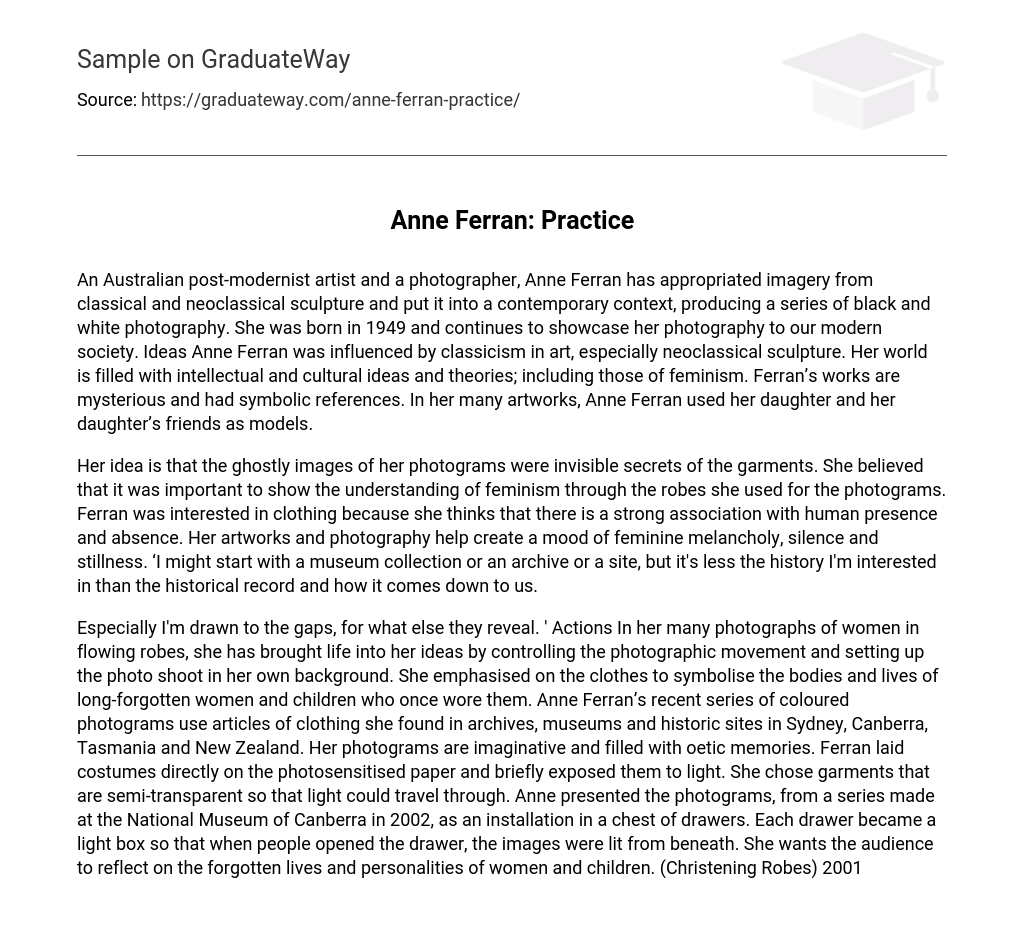An Australian post-modernist artist and a photographer, Anne Ferran has appropriated imagery from classical and neoclassical sculpture and put it into a contemporary context, producing a series of black and white photography. She was born in 1949 and continues to showcase her photography to our modern society. Ideas Anne Ferran was influenced by classicism in art, especially neoclassical sculpture. Her world is filled with intellectual and cultural ideas and theories; including those of feminism. Ferran’s works are mysterious and had symbolic references. In her many artworks, Anne Ferran used her daughter and her daughter’s friends as models.
Her idea is that the ghostly images of her photograms were invisible secrets of the garments. She believed that it was important to show the understanding of feminism through the robes she used for the photograms. Ferran was interested in clothing because she thinks that there is a strong association with human presence and absence. Her artworks and photography help create a mood of feminine melancholy, silence and stillness. ‘I might start with a museum collection or an archive or a site, but it’s less the history I’m interested in than the historical record and how it comes down to us.
Especially I’m drawn to the gaps, for what else they reveal. ‘ Actions In her many photographs of women in flowing robes, she has brought life into her ideas by controlling the photographic movement and setting up the photo shoot in her own background. She emphasised on the clothes to symbolise the bodies and lives of long-forgotten women and children who once wore them. Anne Ferran’s recent series of coloured photograms use articles of clothing she found in archives, museums and historic sites in Sydney, Canberra, Tasmania and New Zealand. Her photograms are imaginative and filled with oetic memories. Ferran laid costumes directly on the photosensitised paper and briefly exposed them to light. She chose garments that are semi-transparent so that light could travel through. Anne presented the photograms, from a series made at the National Museum of Canberra in 2002, as an installation in a chest of drawers. Each drawer became a light box so that when people opened the drawer, the images were lit from beneath. She wants the audience to reflect on the forgotten lives and personalities of women and children. (Christening Robes) 2001





